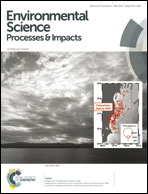ECETOC TRA version 3: capturing and consolidating the experiences of REACH
Abstract
The ECETOC Targeted Risk Assessment (TRA) model is intended to evaluate the nature of human and environmental exposures and risks arising from the manufacture and use of chemicals and version 2 has been extensively applied to develop Chemical Safety Assessments for substances registered under Phase 1 of REACH. In order to maintain the model, ECETOC solicited suggestions from TRA users arising from their experiences gained from its use in the 2009–2011 period. TRA users identified 16 different ways in which the worker exposure predictions of the TRA might be further improved at the technical level. The suggestions can be divided into those that are capable of being incorporated into the model and those which cannot which, in turn, appear to be reflective of the wide range of technical understandings of users of Tier 1 REACH models such as the TRA. The consequence of such user heterogeneity presents challenges for model developers, particularly those models intended for inclusion in regulatory processes. Those considerations that are relevant for the revision to the worker portion of the TRA (version 3) are described, together with their potential relevance for other REACH exposure models.


 Please wait while we load your content...
Please wait while we load your content...